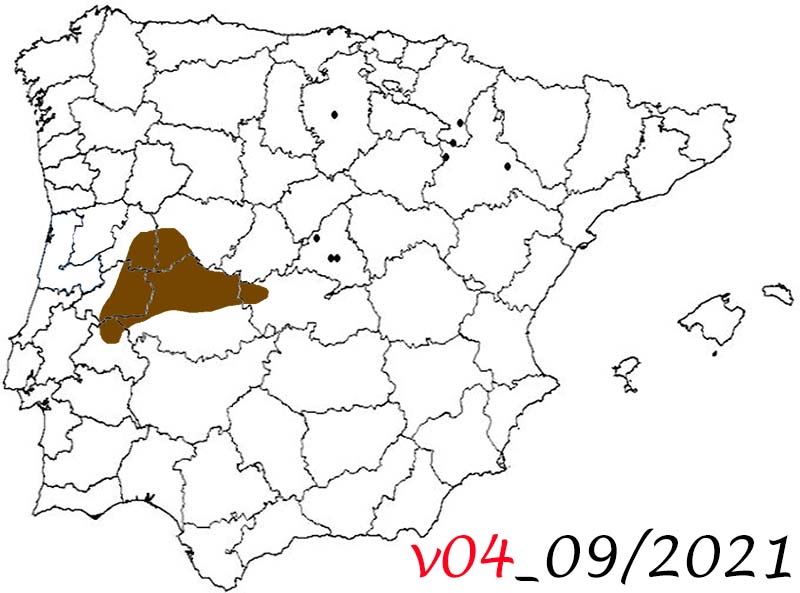


4. Travel through the West of Spain and annexed Portugal
4. Travel through the West of Spain and annexed Portugal
September 9 to 13, 2021
Day 4, from Castelo Branco to Hervas
September 12, 2021
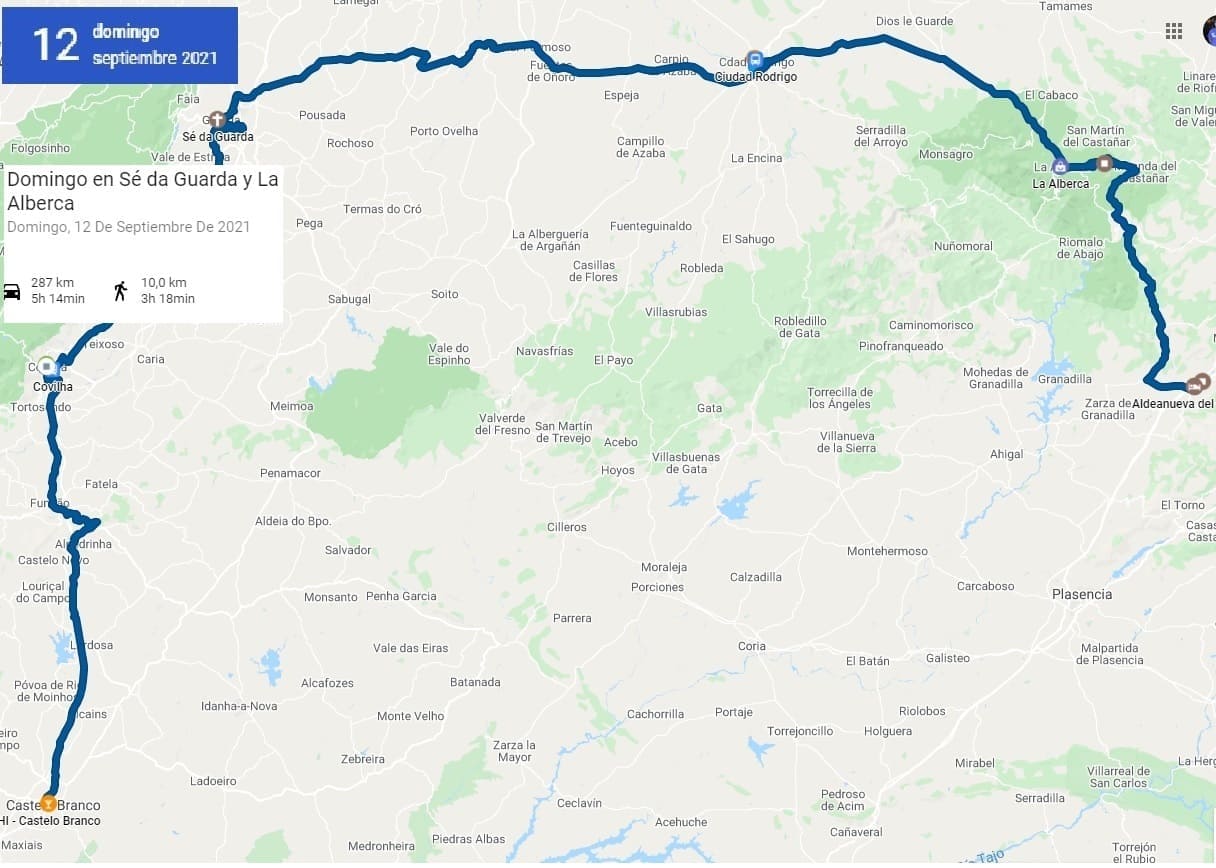


69. Covilha
69. Covilha
To go back to Spain I decided to go through eastern Portugal and Salamanca. The cities in my path were Covilha, the second largest city in the Castelo Branco district, which is a university city in the mountains. From the road you can already see many tall buildings on the mountain and in the distance the old town, because this city originally had a defensive character.
Once you reach the northern half of the mountain where the city is, there are escalators. The first church that can be seen going up is that of the Sacred Heart, a common church from the 18th century.
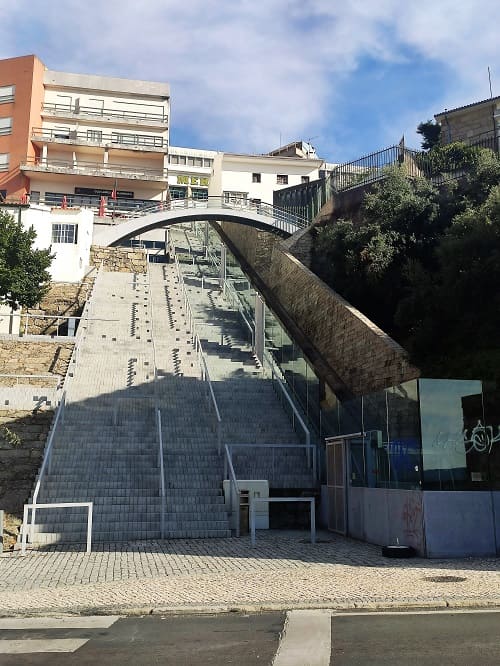
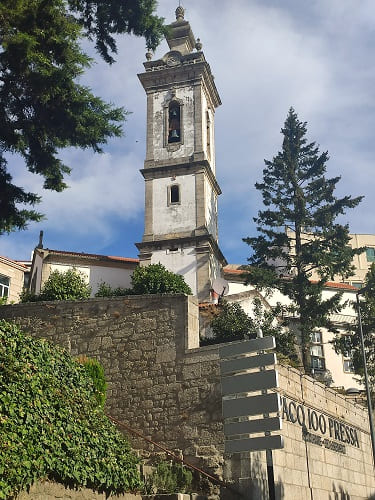
Then we arrive at the Plaza Mayor where there are houses from the 18th-19th century and which show the beginning of the modern city. There is the city hall.
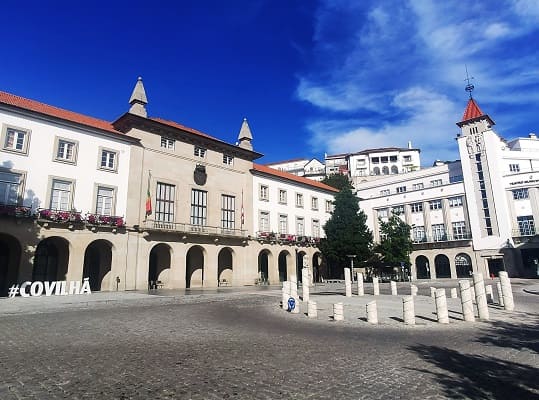
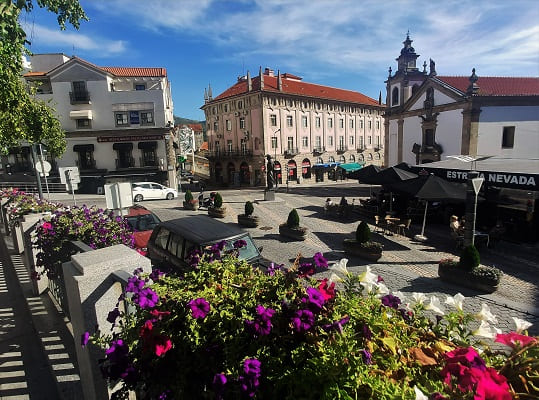
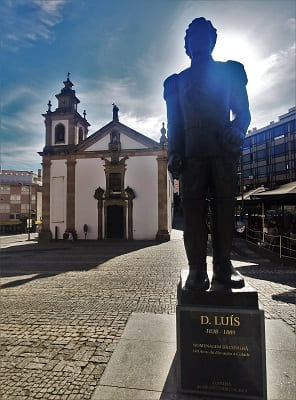
In this Plaza Mayor is the La Misericordia Church, from the 17th century with the statue of Luis, mayor with whom the city prospered well.
Passing towards the historic quarter, we see the church of Nuestra Señora de la Concepción, belonging to the disappeared Convent of São Francisco built in the 16th century, with a late Gothic doorway in which its interior can be highlighted baroque. It belonged to the disappeared São Francisco Convent built in the 16th century, it maintains the original doorway in late Gothic style.
Inside, it is worth admiring the four-pointed star vault and the 16th century side chapels. XVI, belonging to the Rodrigo de Castro family to which the Mayor of Belmonte belonged. In the presbytery, the roof is made of coffers, where you can see paintings alluding to the life of Christ. Of the carved gold panels that cover the walls, the image of San Francisco stands out.
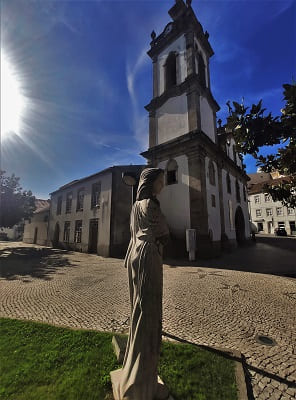
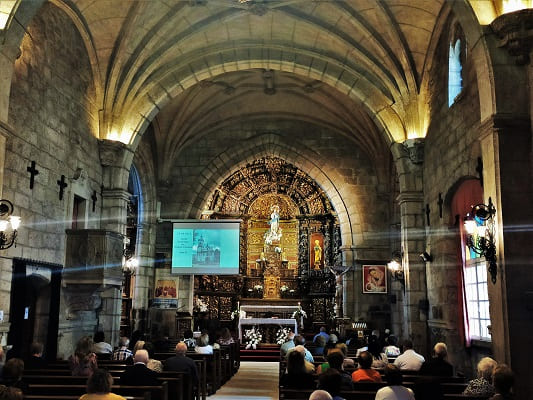
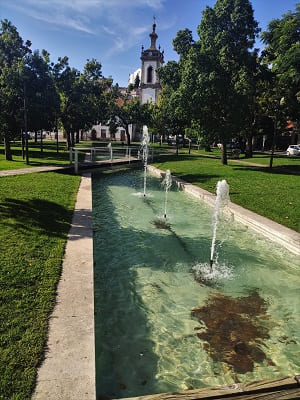
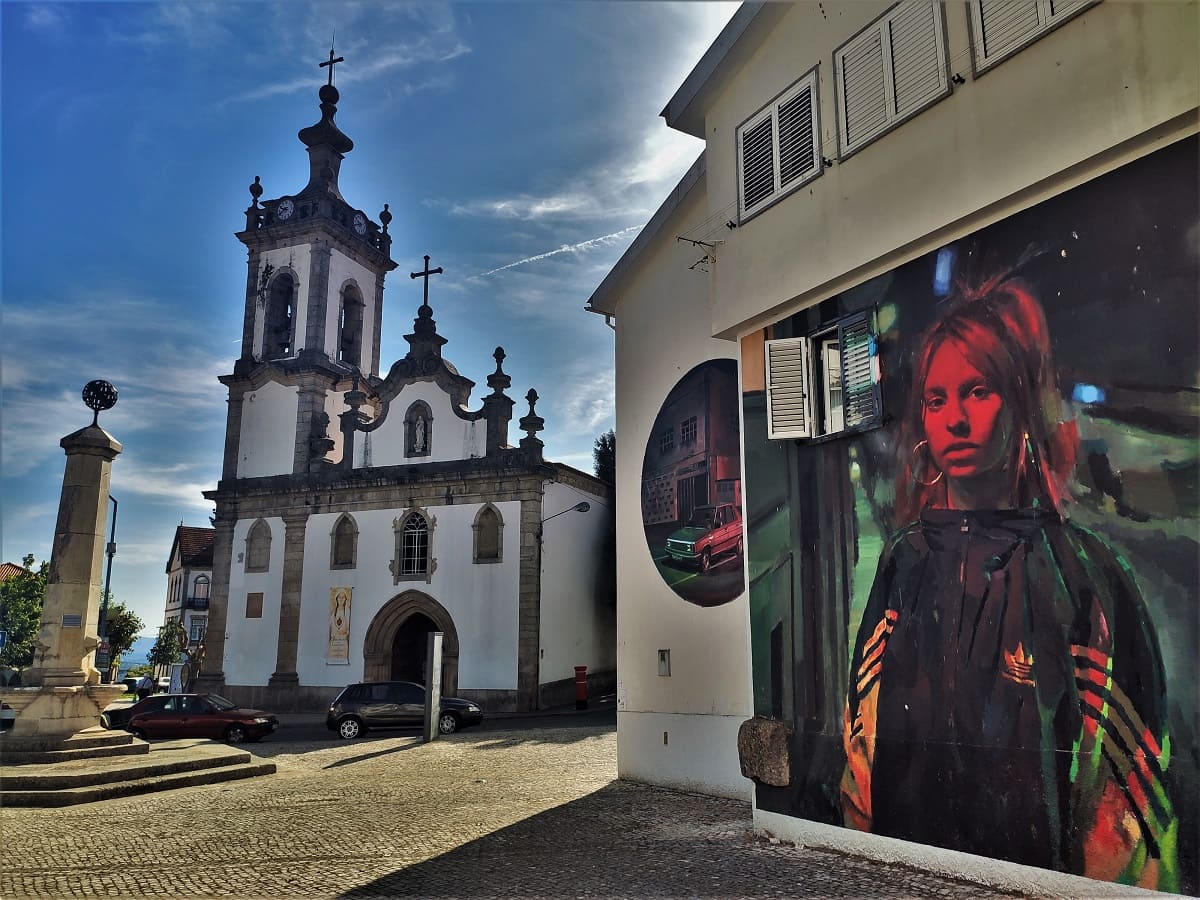
On the other hand, very close there are elevators to go down since from there is the best panoramic view of the city.
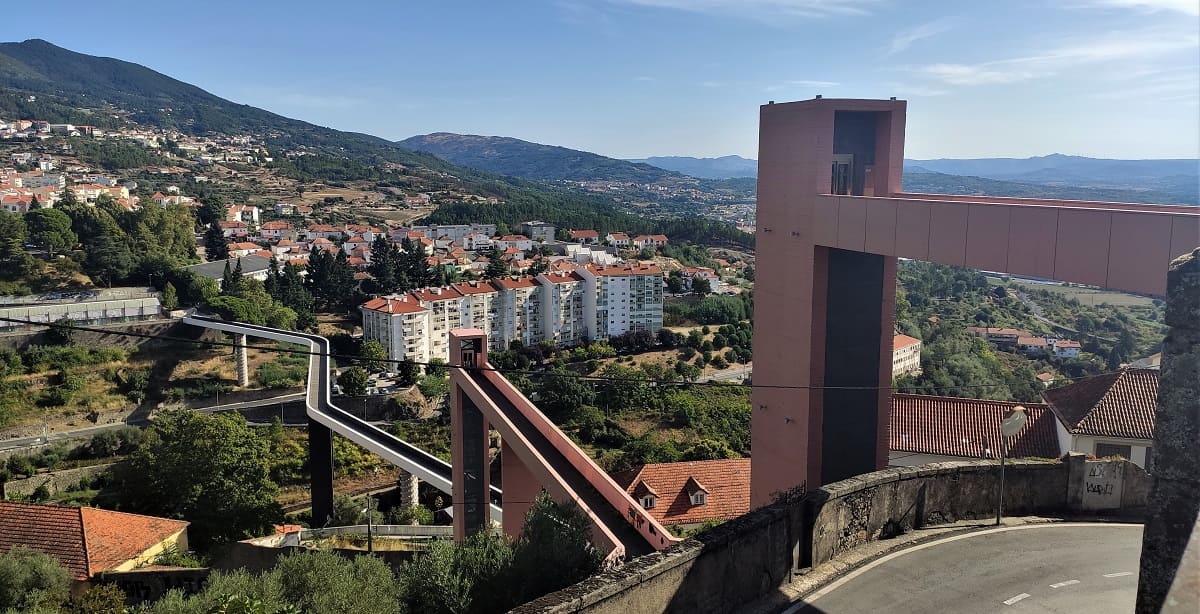
Por último vería la iglesia de Santa María la Mayor, origen que podría ser la antigua mezquita de la ciudad ya que debido al signo montañoso pudo ser un asentamiento árabe de control sobre el norte de Portgual antes de la reconquita. Tiene un estilo muy portuges ya que tiene totalmente decorada con pinturas en azulejos la parte exterior y por dentro de estilo barroco, con varios retablos en sus laterales y en el centro. Remata el altar mayor cuatro tallas sobre cuatro pedestales en la parte superior.
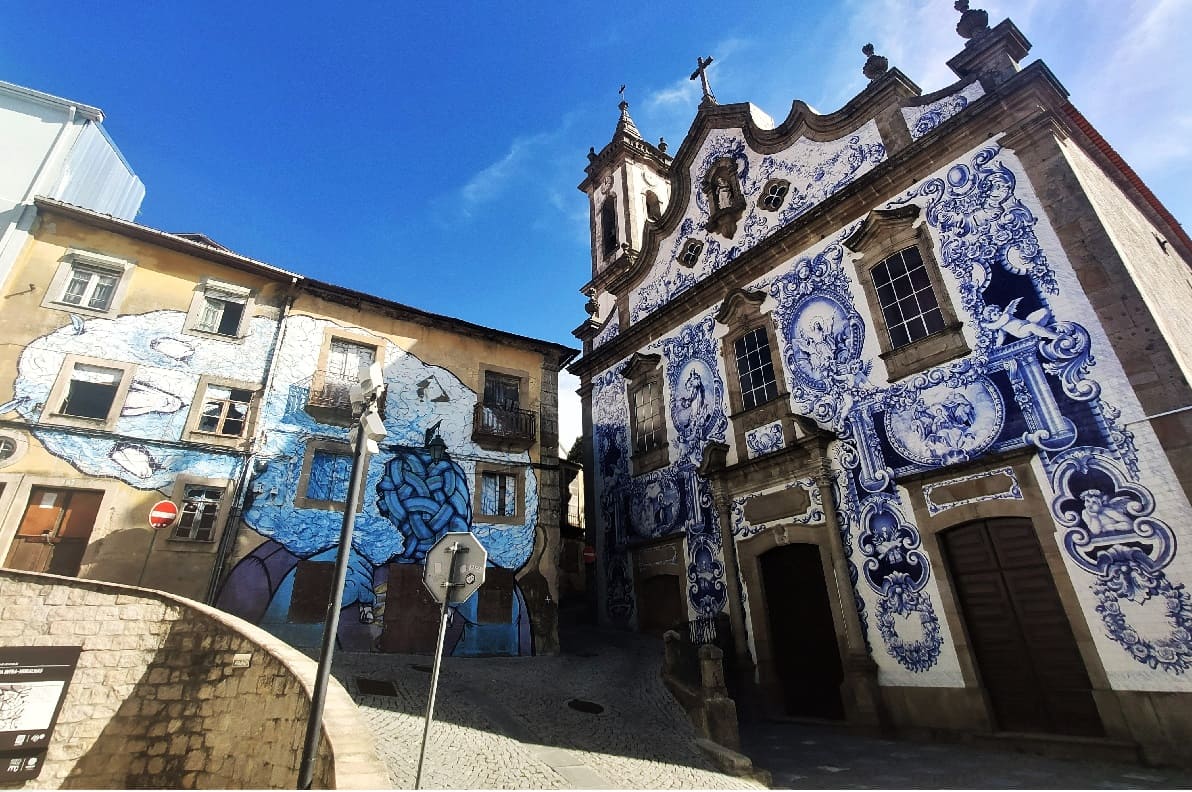
Passing Covilha, he would already be in the Guarda district and would go to its capital.


70. Guarda
70. Guarda
Guarda is a city with a fairly well-kept medieval-style historic quarter. I left the car in the same old town as it was the weekend and it was free, near the
Jose Lemos municipal garden.
From there I will go to the center.
The cathedral and its large square stand out. The Gothic and Manueline style is the Portuguese style that many of the 15th century buildings in the country have. It has several churches and a tower (Ferreiro) that have a modern elevator and good views of the entire town. In the background you can see what remains of the old castle, the keep.
The church of La Misericordia, from the 17th century in the Baroque style that overlooks the square with a beautiful pillory. Going up the street of the castelo I will arrive at the cathedral.
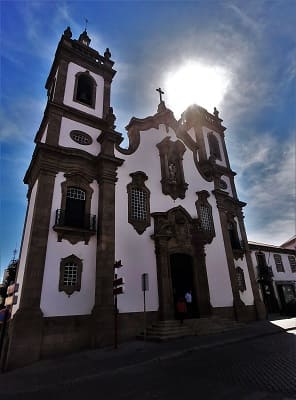
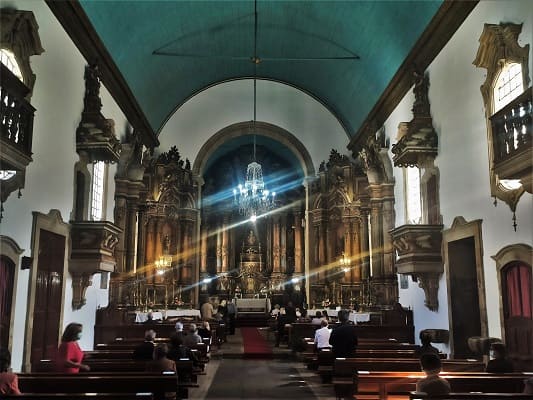
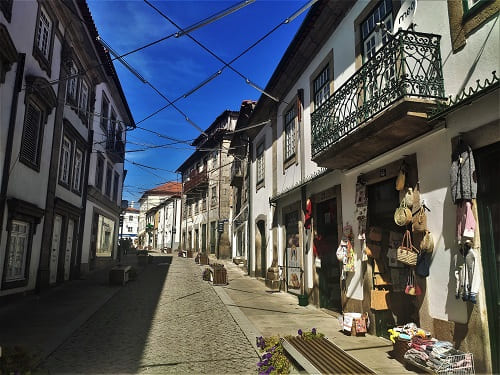
We cross towards the cathedral square, walking through its streets that are full of artisan products and shops. At the back of the cathedral is the old episcopal palace. The cathedral is located in
Plaza de Luis Camoes.

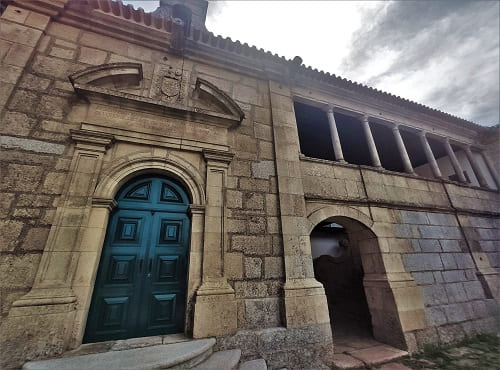
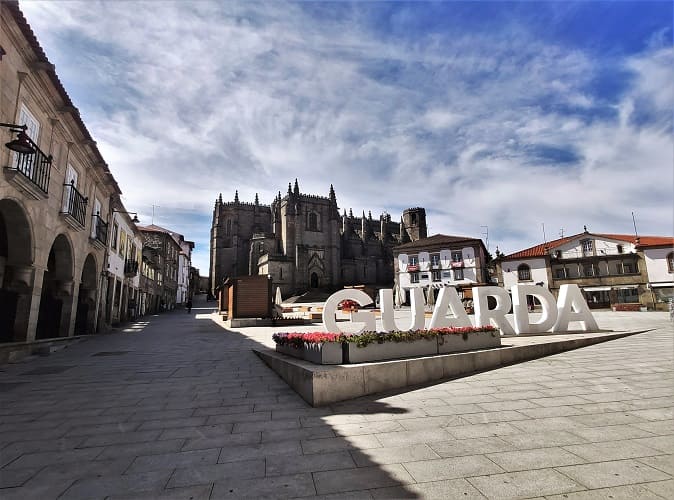
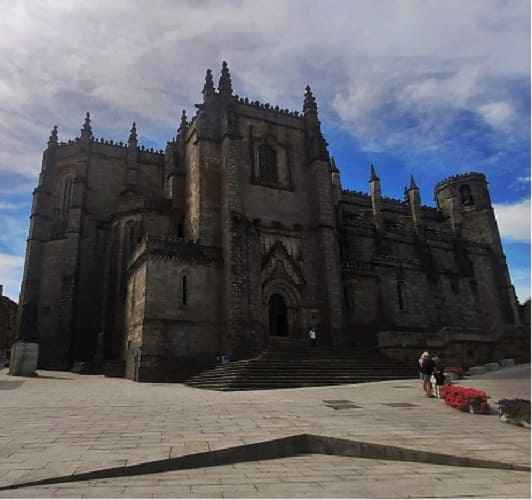 The Sé Catedral de Guarda
The Sé Catedral de Guarda is one of the most important monuments in Portugal, dating from the 14th century, and which took almost 200 years to build. It is a mix between gothic and manual style.
The material used is granite giving more the feeling of a castle.
The interior gives the feeling of total gloom and dark times, and is very sober. The Renaissance altarpiece made up of statues on 4 shelves stands out, with carvings representing many of the important characters of the New Testament.
The exterior portals are very beautiful, one Gothic and the other Manueline, the Portuguese Gothic style.
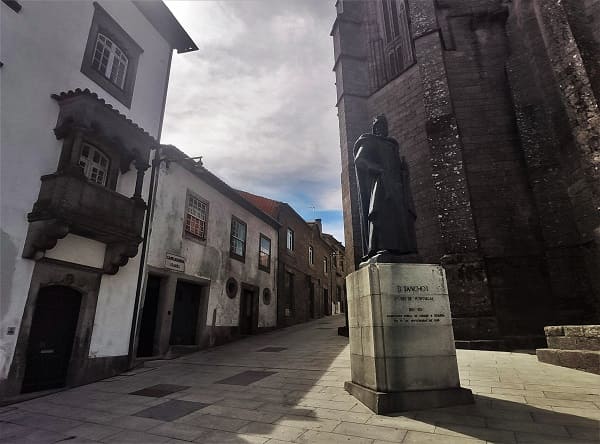
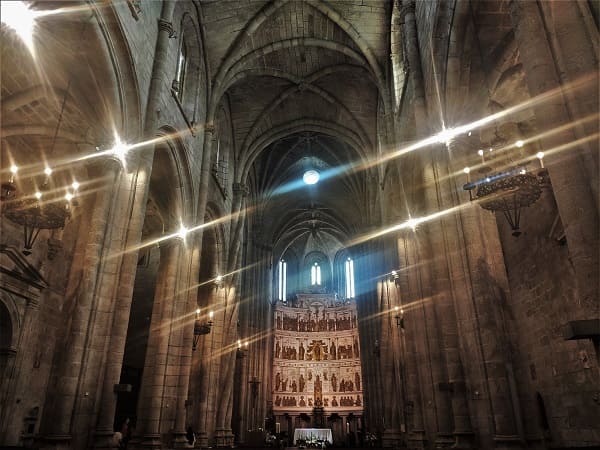

Lastly, I would go up
the Ferreiro tower, one of the remains of defensive towers in the city, by elevator thanks to a code they gave me at the tourist office and not go up the stairs. This elevator must be a new construction and they want to promote it. The views are very good both towards the Sé and towards the rest of the city.
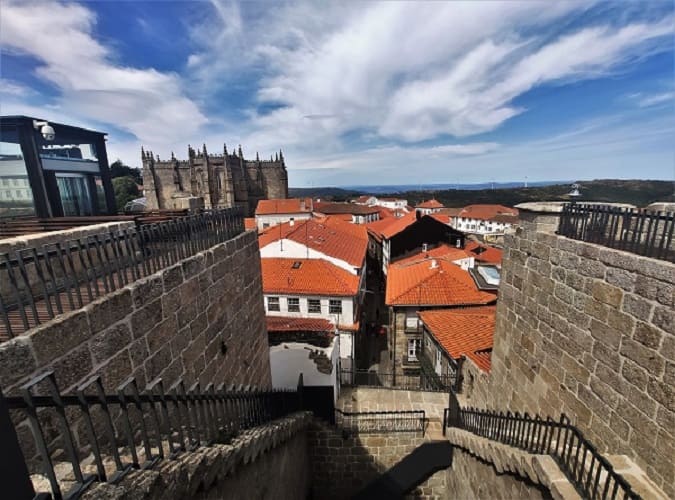
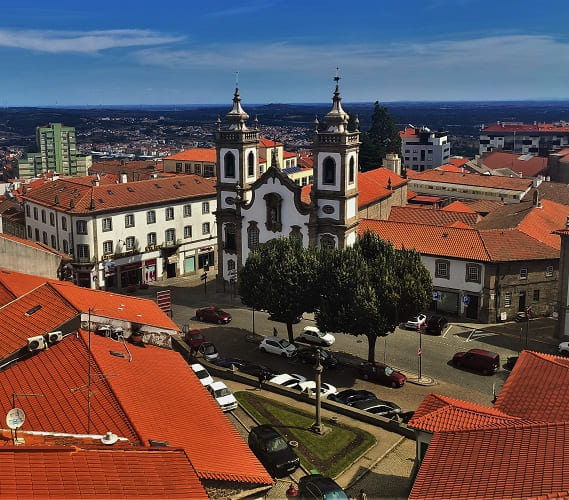


71. Ciudad Rodrigo
71. Ciudad Rodrigo
It is a very monumental city of Salamanca that is not usually found on the way to anywhere except, as in this case, when you go to Portugal from Salamanca or vice versa. Good time to visit. This city surprised me very positively because the historic center is well delimited by the wall that is completely preserved. This can be explored and has several cannons possibly from the times of the Napoleonic invasion.
I would stop just outside the old town, near the ruins of the convent of San Francisco. I thought that as usual, the restaurants near the old town are more expensive but in this case I was wrong. In the old town there are many restaurants with good daily menus and good prices below 15 euros. I had a combo plate in a restaurant but I could have had a much better meal in the town for a little more money.
I approached the convent to see it both outside and through the window, since at that time it was closed. There is a museum about the city inside. The convent dates from the 13th century, being of a Gothic style. The ruins correspond to the epistle and to one of the chapels of the church that keeps on its exterior the coats of arms of the buried families, of which he was bishop of Zamora in the 16th century. It would be destroyed in the war of independence between the people of Spain and the France of Napoleon.
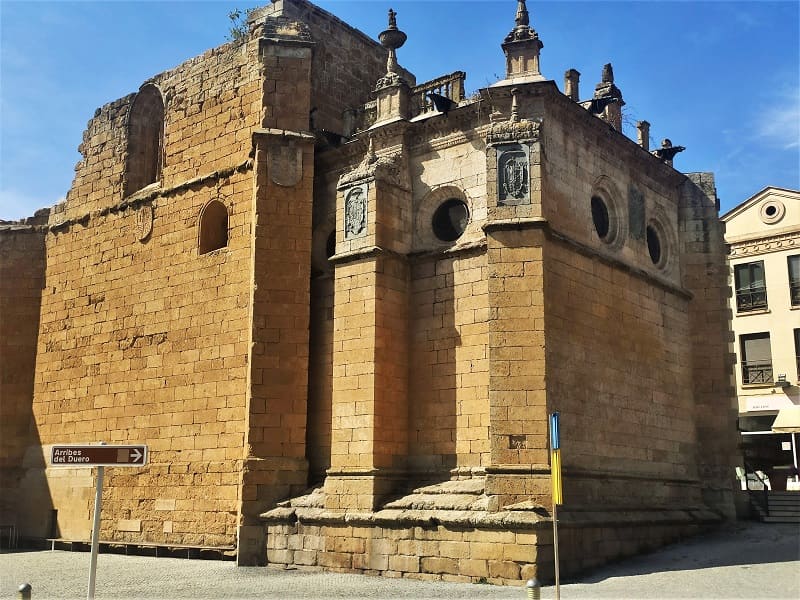
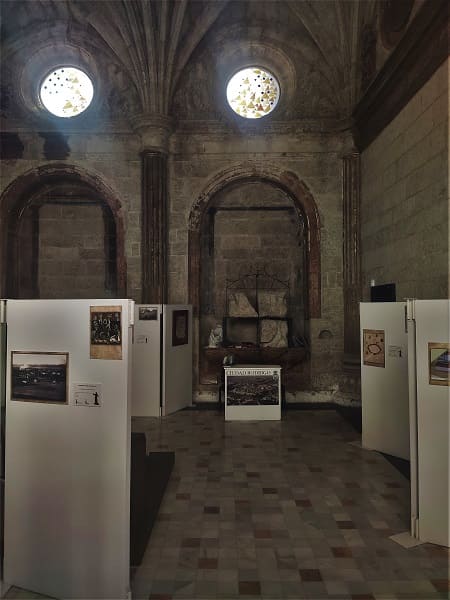
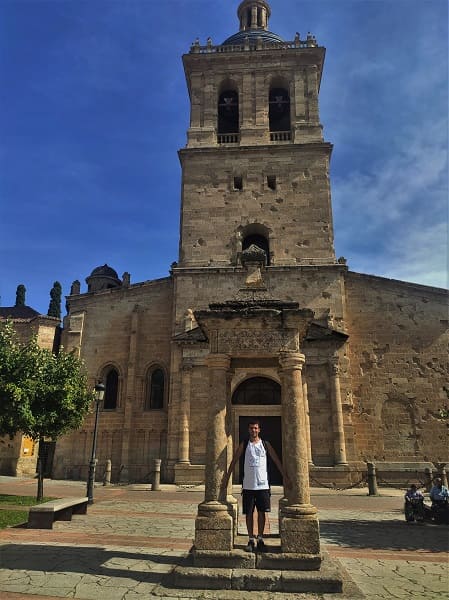
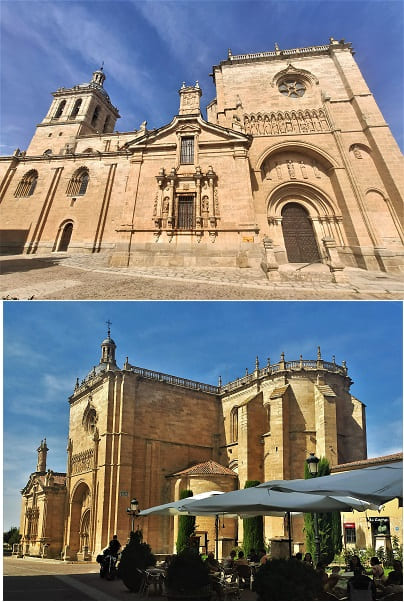 The Cathedral of Santa María
The Cathedral of Santa María dates from the 12th century. It was ordered to be built by King Fernando II of León. Let us remember that Salamanca in medieval times was part of the kingdom of lions. The cathedral would be completed in the 14th century, so the exterior style is Romanesque but it has all the Gothic details on the portals and finishes of the structure. The exterior apse is Romanesque as well as the exterior carvings or capitals, but the portals are Gothic.
This cathedral has one of the most beautiful covers of the peninsular Romanesque, with a frieze of twelve figures from the Old Testament and a tympanum that has a Christ Pantokrator, a very famous and rare construction that is preserved in churches since they used to be damaged and disappear. .
At the main door there are five other friezes on Marian mysteries, with different sculpted carvings.
The portico of the cathedral called
Pórtico de la Gloria o del Perdón, with a representation of the apostles and many figures related to the life of Jesus. It is kept behind the tower building, so even though there have been wars and battles that can be seen in the cannon marks on the tower, it is intact, and it is a privilege to contemplate it.
It has a stupendous Gothic cloister and some tombs in it, as well as chapels inside where the nobles of the city of those times are buried.
The main altarpiece of Ciudad Rodrigo was one of the best works of painting of the time. It consisted of 46 different boards, and was up to 12 meters high. The altarpiece was changed for a silver one that would be melted down in wars to cover expenses and the tables of the previous one would be sold. Today they are in a museum in the United States of Arizona.
This is a pity, since the one who goes to see the canvases does not see them in the original place where they were placed and the one who goes to the cathedral knows nothing of what was there in its day.
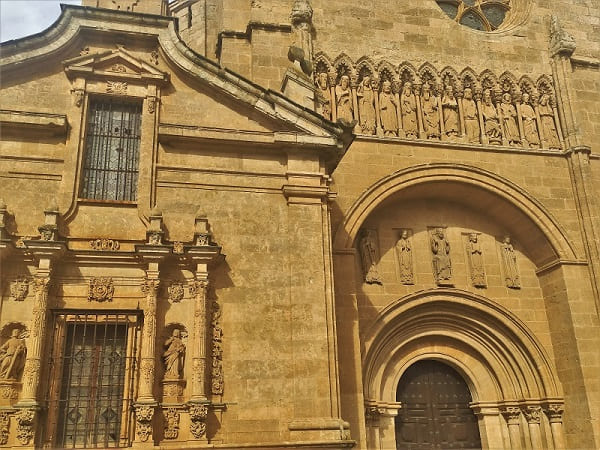
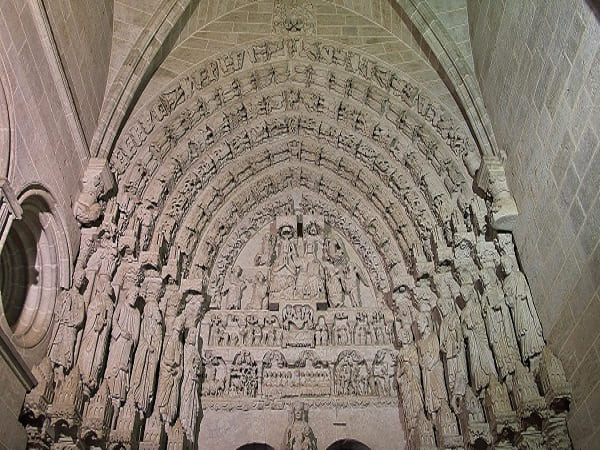
Here the interior of the cathedral, which as can be seen does not have an altarpiece covering the apse, but rather some paintings.
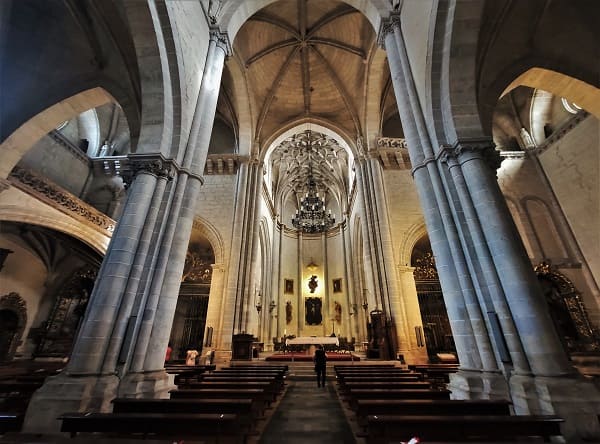
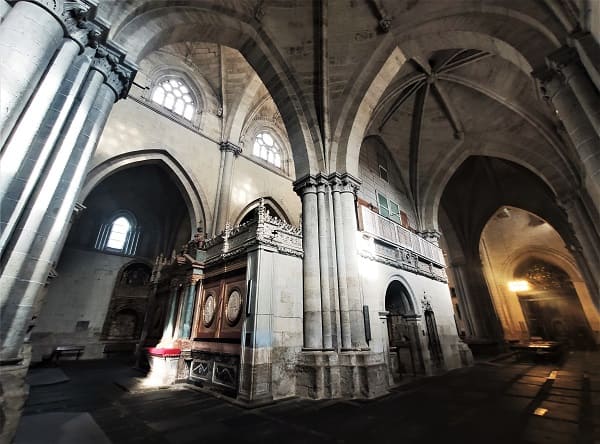
And here the
Gothic cloister of the cathedral.
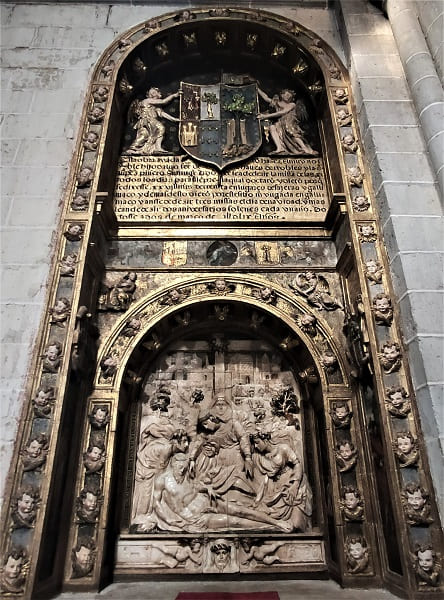
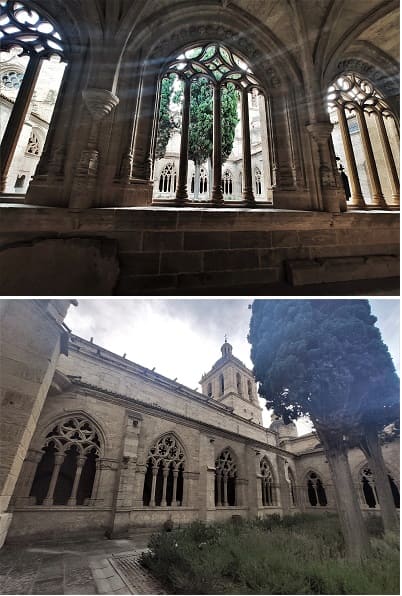
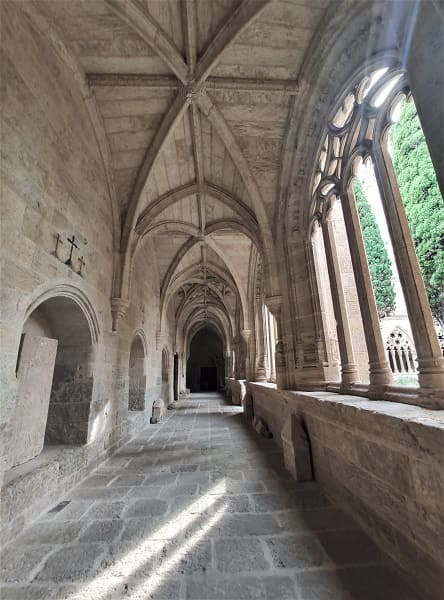
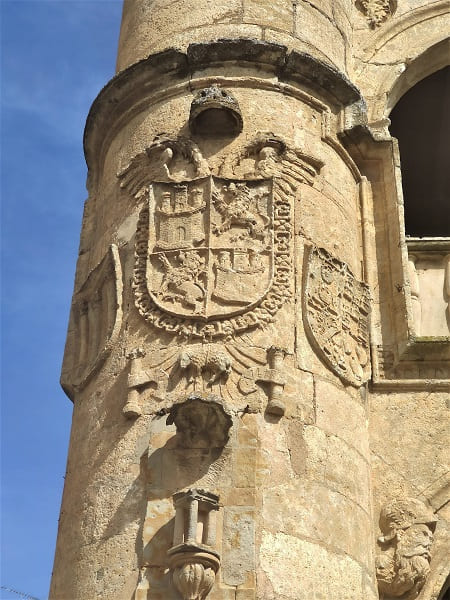
The city has numerous palaces and stately homes such as the Águila Palace, which has a patio with numerous details of the Flamboyant style, the Palace of the Counts of Yeltes, the Montezuma Palace, the Casa de las Cadenas, the Cueto House, the Plaza mayor has a very beautiful town hall that was a palace in its day and nearby is the Cueto house, the Vazquez house, the Herrera Maldonado house, etc.
Here is a list of the different patrimonial assets of the city:
- Castle of Enrique II: Ordered to be built by King Enrique II in the year 1372.
- Cathedral of Santa María: From the 12th to the 14th century.
- Walls: It has five gates, that of the Sun, that of the Count, that of Amayuelas, that of Sancti Spiritus, that of La Colada and that of Santiago.
- Palace of the Marquesa de Cartago: neo-Gothic in style, built at the end of the 19th century and renovated in 1953.
- House of the First Marquis of Cerralbo: Dates from the first half of the 16th century.
- Cerralbo Chapel:
- Town Hall.
- House of Chain:
- Casa de los Vázquez: a manor house from the 16th century, in the Gothic style.
- Former Convent of the Discalced Franciscan Sisters: 18th century building.
- Herrasti Square:
- Church of San Andrés: of Romanesque origin, the oldest in the city.
- Major bridge.
- Church of San Cristóbal: old church rebuilt in the 18th century.
- Hospital of the Passion. Building from the 16th century, heavily modified during the 18th century.
- Courtyard of the Palacio de los Águila.
- Palace of the Marquise of Cartago.
- Hospice. The Royal House of Foundlings.
- San Cayetano Diocesan Seminary.
- Ruins of the convent of San Francisco. Remains of the great convent of the Franciscan order.
- Convent of San Agustín: 16th century building.
- Palace of the Ávila and Tiedra family.
- Casa de los Sexmeros: today the Municipal House of Culture.
I will start by going through the Cerralbo church, very close to the cathedral, which as you can see is Renaissance in style and corresponds to the 17th century when the reforms of the cathedral were completed.
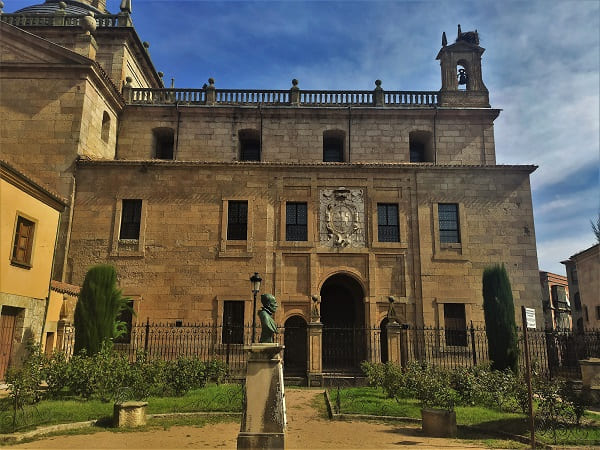
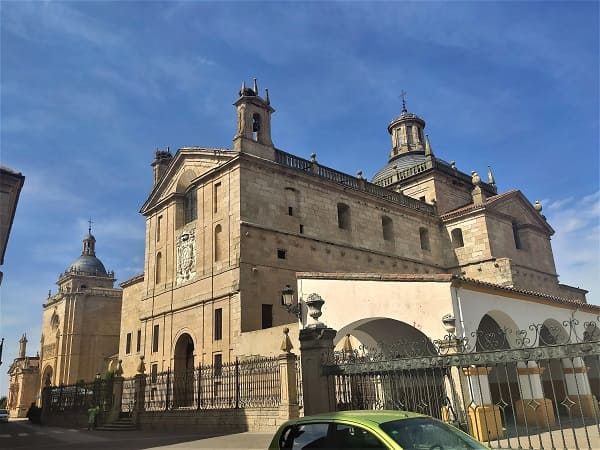
I will pass by
the square of Buen Alcalde, which occupies the land belonging to the lords of Cerralbo, next to their church. It was formerly called Plaza Nueva to differentiate it from Plaza Mayor. Next to the square the chapel of the Cerralbo. Continuing along Calle Mayor you will reach
the Plaza Mayor, where you can find the town hall building and a lot of palatial houses from the 15th-16th century.
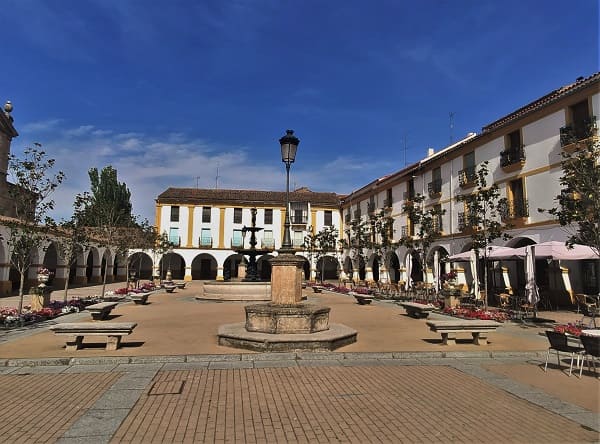
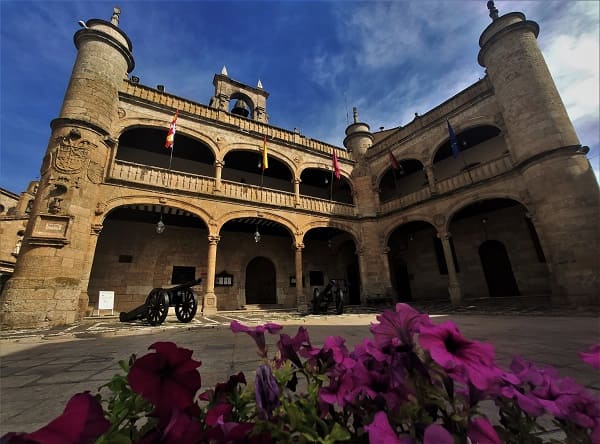
Palatial houses such as those mentioned above. In the images by order
the Cueto House from the 16th century, which has undergone different modifications. The corner window with the coat of arms of the house stands out. Another is
the Casa Gomez de Silva, from the 16th century and in Renaissance style, the façade with the shield holding two figures stands out.
the Vásquez house, from the beginning of the 16th century like almost all the great palaces in the city, in the Gothic style. Alfonso XIII would stay in this house and it has been a post office since the Spanish Civil War.
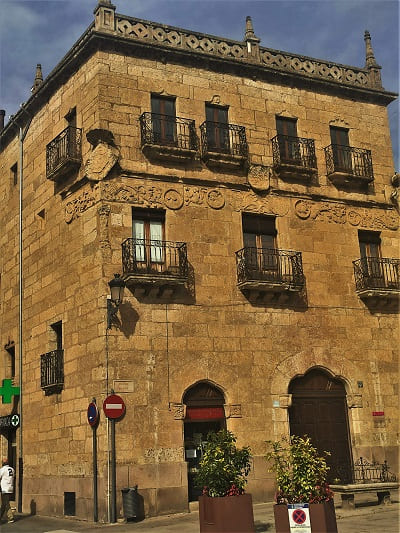
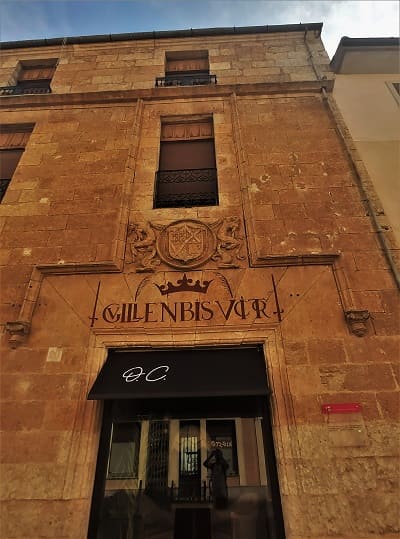
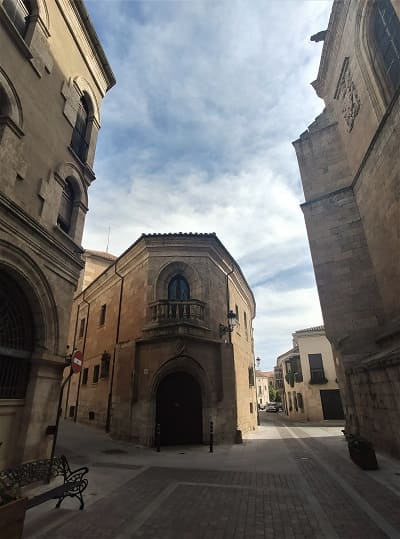
Other important palaces in the city
the Eagle Palace, one of the best exponents of Flamboyant Gothic in the city. It is the largest palace in the city and has two interior patios, the one seen in the image is Plateresque in style, decorated with medallions and shields on the arches. It also has a chapel inside.
It is so important that even the Queen of England in 1692 was housed inside it, on her trip to Portugal. On the right
the house of the Marquise of Cartago.
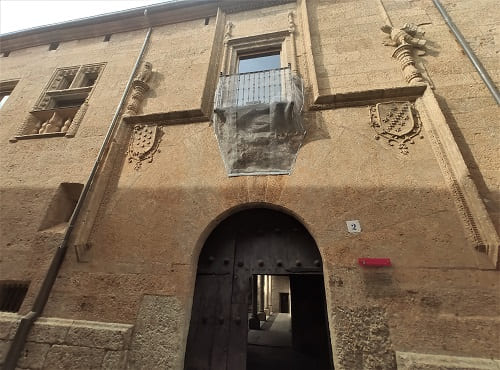
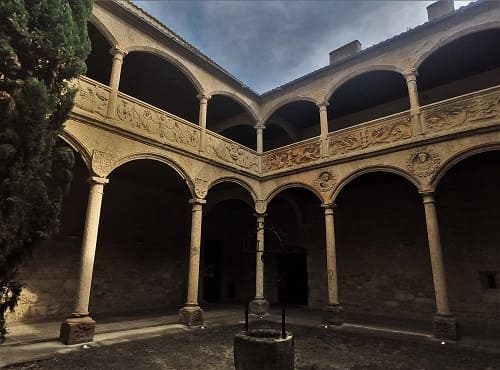
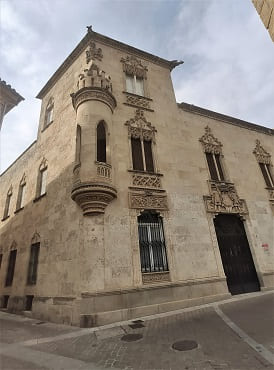 The palace of the counts of Yelte,
The palace of the counts of Yelte, with a Baroque façade bearing the shields of its promoters. It was used as a military building since the 18th century.
The palace of the Montezuma family, from the 16th century, descendants of the Hernán Cortes and Montezuma family, today functions as the Municipal House of Culture.
The palace of the Count of Montarco or Palacio de los Castro, of the Ávila y Tiedra family, mayor of the city in the 15th century, date of construction of the palace, Renaissance style with a beautiful patio in its inside. It was the residence of General Wellington in the war of independence against the French. It served as a military building and hospital at that time but in the 20th century it would be restored. It currently serves as a building for celebrations of events such as weddings...
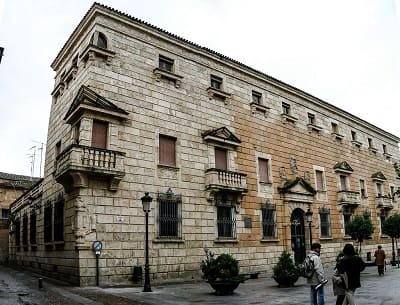
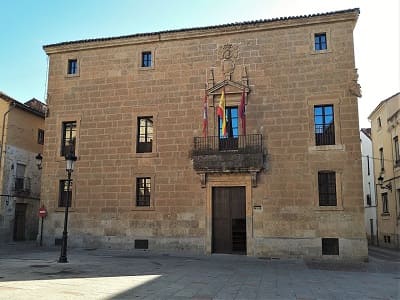
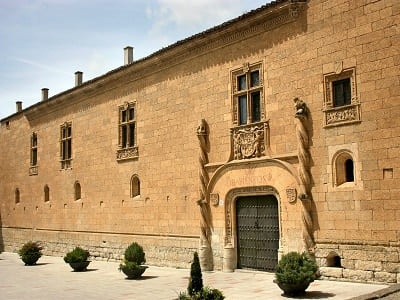
As religious buildings the church of San Isidoro and San Juan, the Hospital de la Pasión. With an old church from the 15th and 16th century.
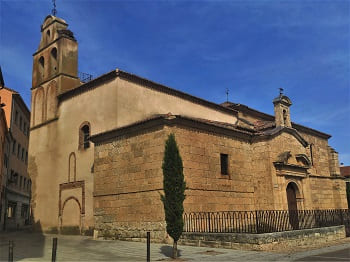
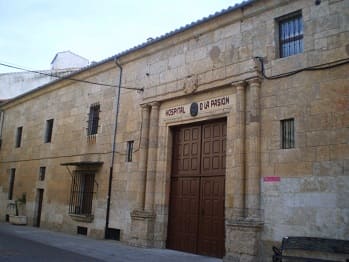
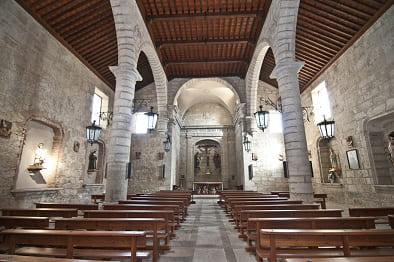
The biggest claim next to the cathedral is the visit
to the castle, today a national hostel since 1929, of which we can see several rooms. It was built in the 14th century by Enrique II de Trastámara. It contains several defensive walls that would be built in the fifteenth century. It has been rehabilitated in the 20th century.
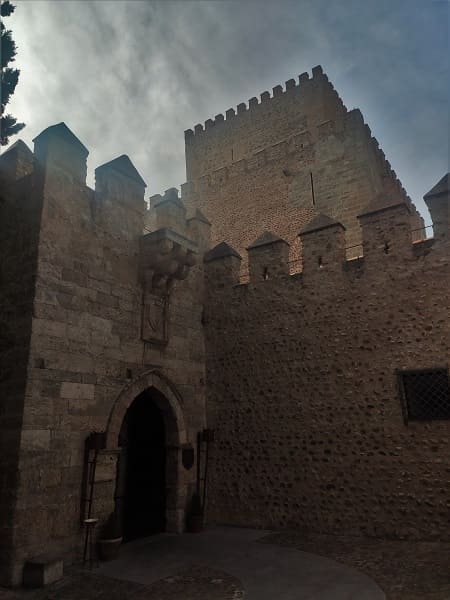
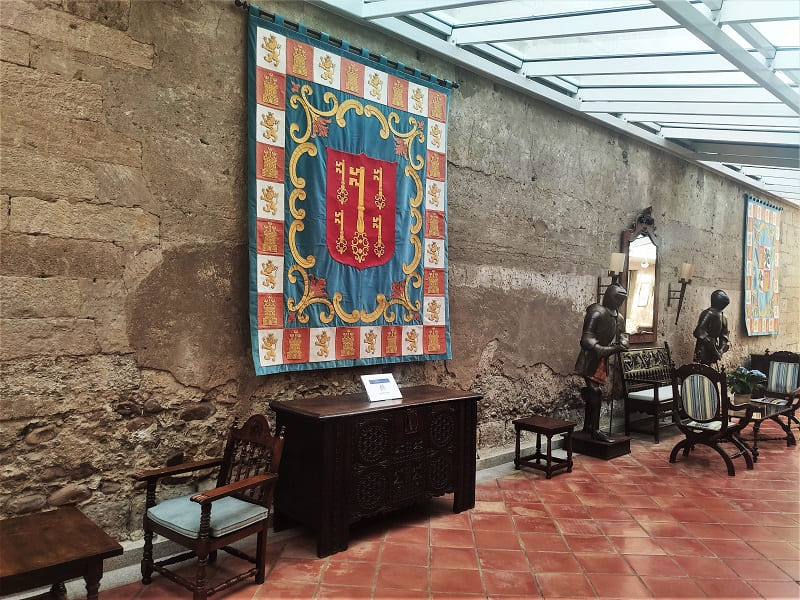
You can climb the tower to see the views. You can also walk through its gardens.
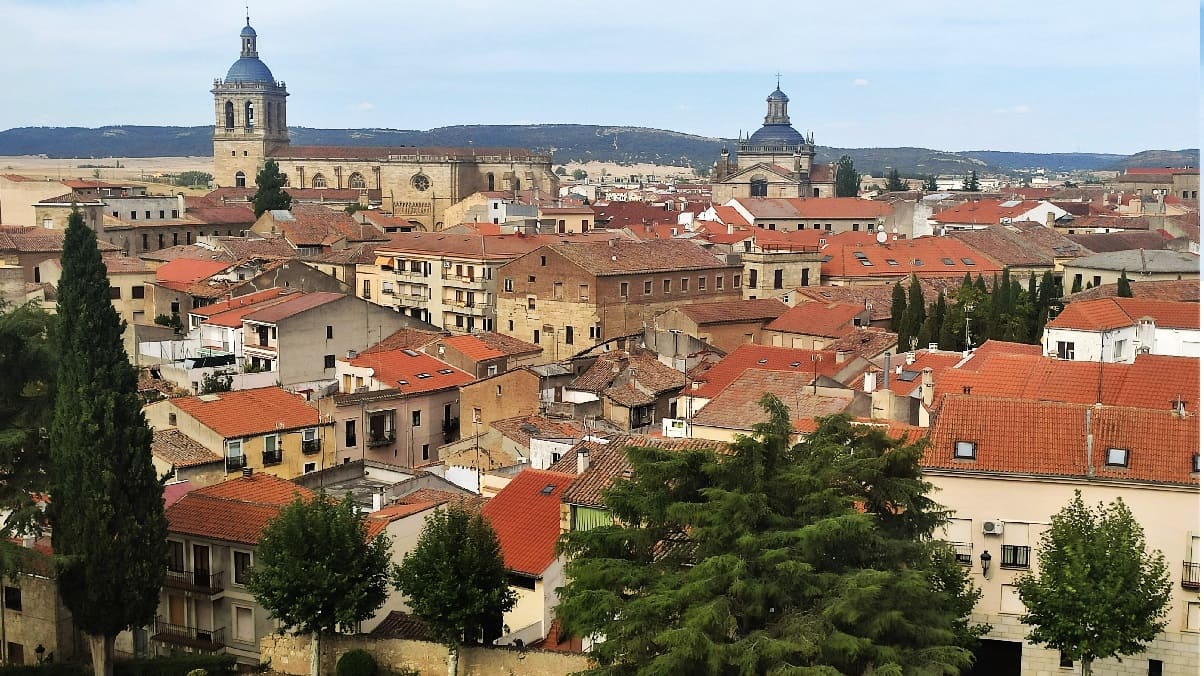
When finished, I would change the road to the province of Cáceres, visiting some of the most beautiful towns in Salamanca.

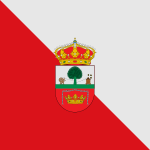
72. La Alberca
72. La Alberca
One of them is
La Alberca, a town that preserves all its ancient architecture completely with its narrow streets, its arcades and roofs as if they were from the first day. This town has received several awards and is overflowing with visitors every day of the year. Many merchants from surrounding towns have shops there, where each doorway and house has its stall and where there are several haute cuisine restaurants. His specialty is Iberian ham. There I ate a good sandwich for 3 euros of Iberian ham late in the afternoon, and I remember seeing the already tired cutter who had not stopped cutting and selling all day. When I arrived there were a lot of people coming out and I was lucky to park in the free parking lot of the town.
The first thing I come across is
Plaza San Antonio, where the cross of San Antonio is located.
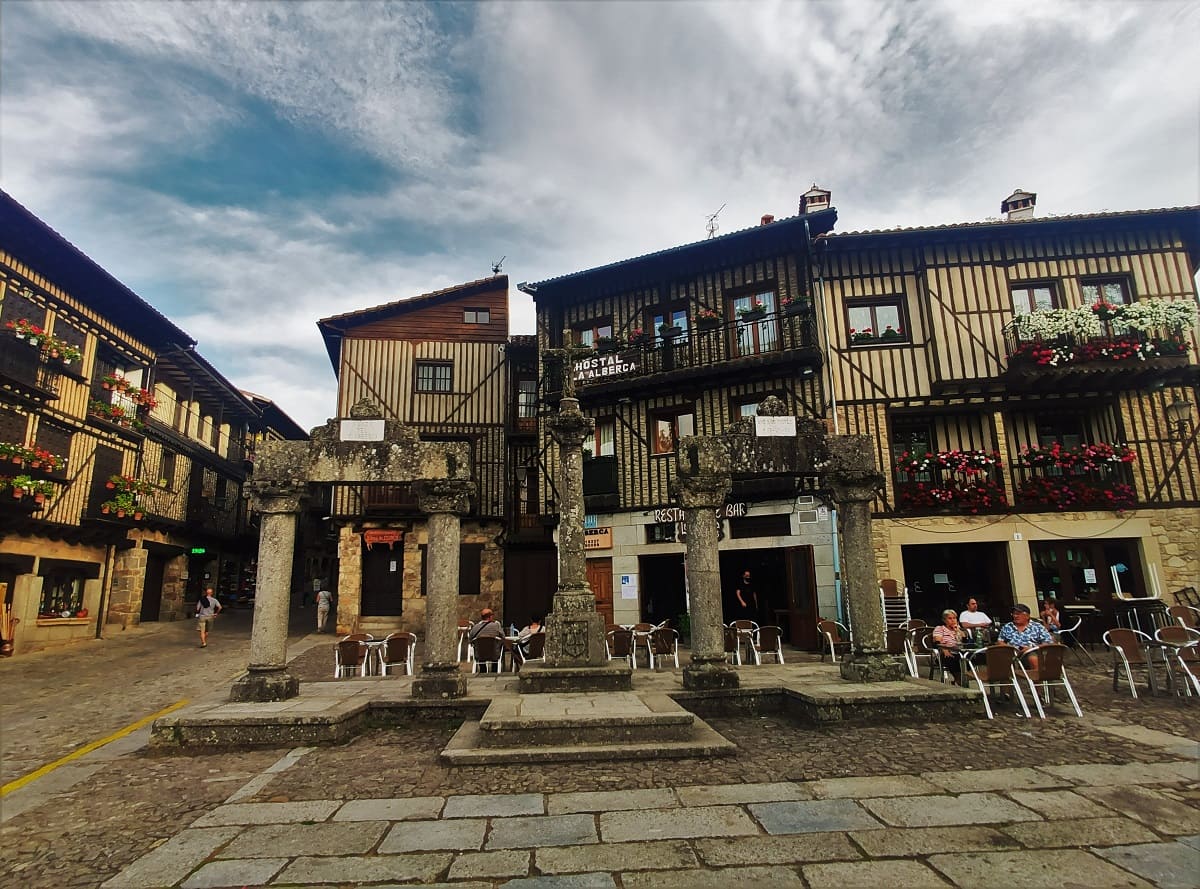
Later I went visiting its streets, with the stalls that I mentioned before. Later, as there were fewer people left, I was able to visit the town calmly, however, in
the Plaza Mayor there would be about 50-100 people, and there could be perfectly 500 at other times of the day. It must be a bit overwhelming to come to this town in high season and on the weekend with so many people and so little space since the town is quite small. In the photo next to the fountain and the other transept in the town.
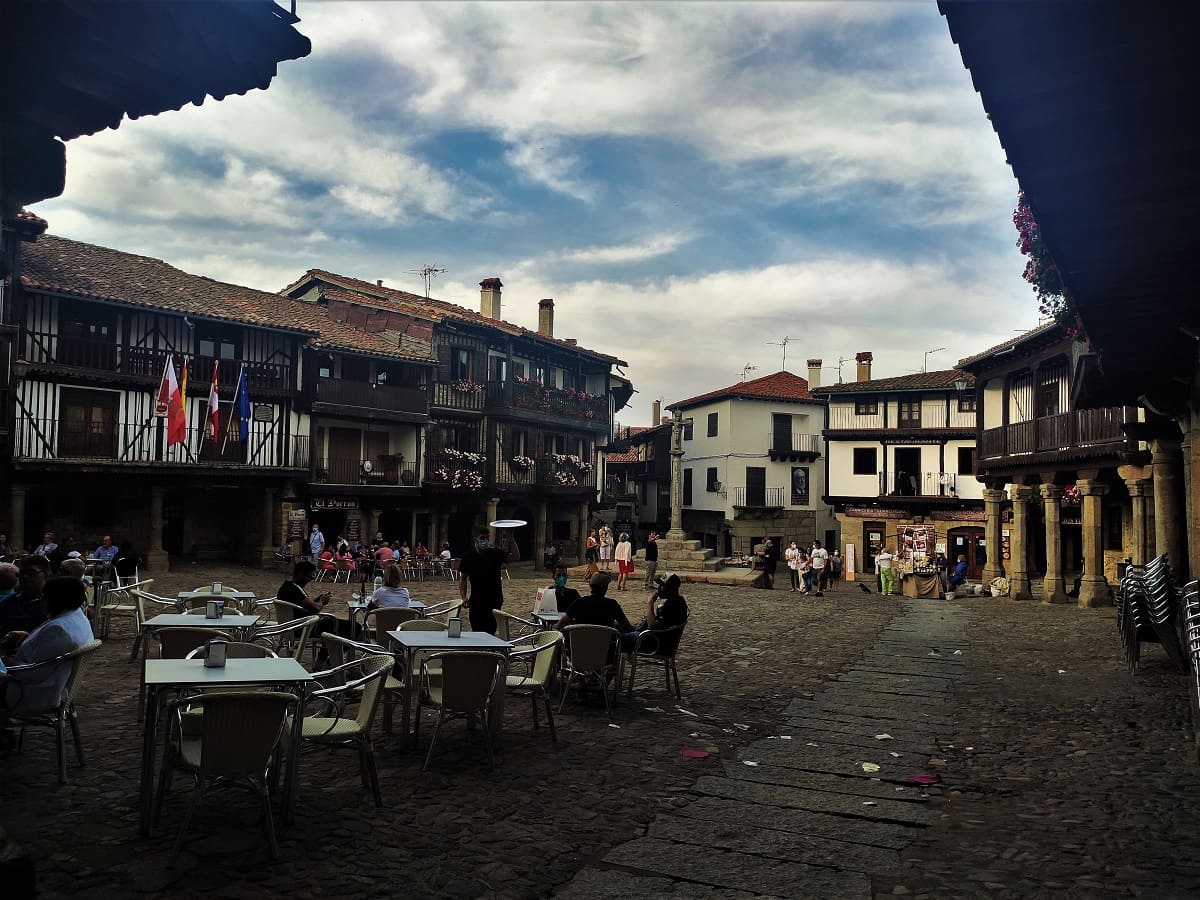
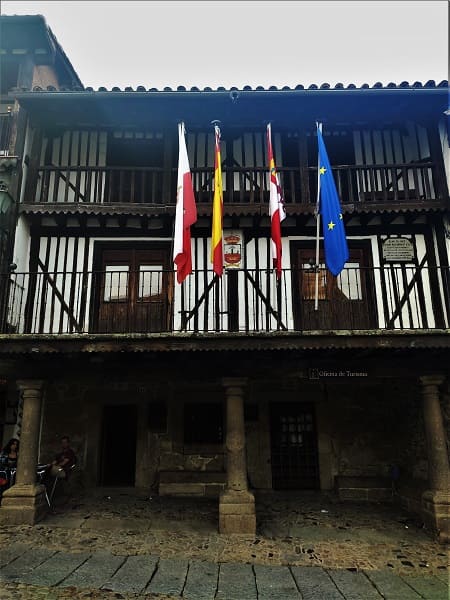
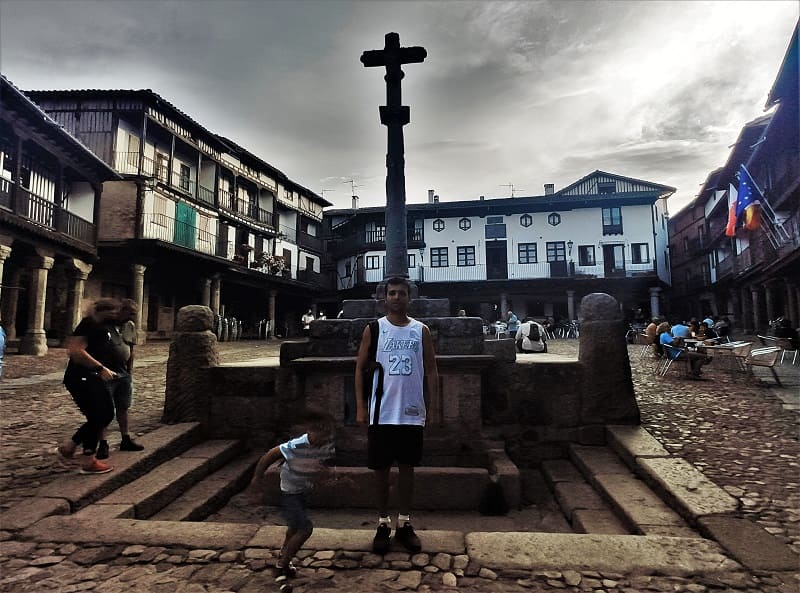
Also worth visiting is
the church of Nuestra Señora de la Asunción, built on top of another Romanesque temple, which can be seen in the structure of the tower. The rest is in Renaissance style, although inside it has Gothic traces such as the ribbed vault and Baroque style in the altarpieces.
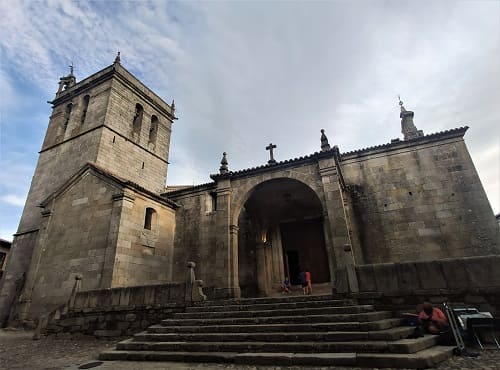
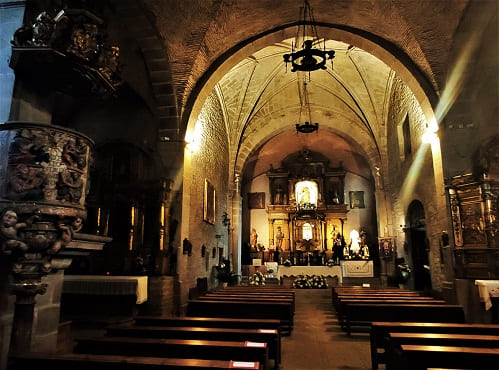
The stream that passes through the pool leaves a beautiful impression with the town as can be seen in the following photos.
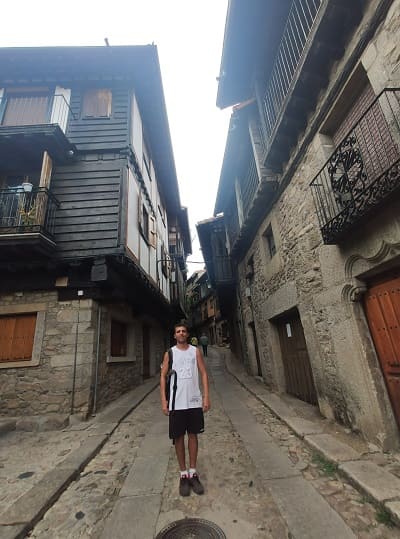
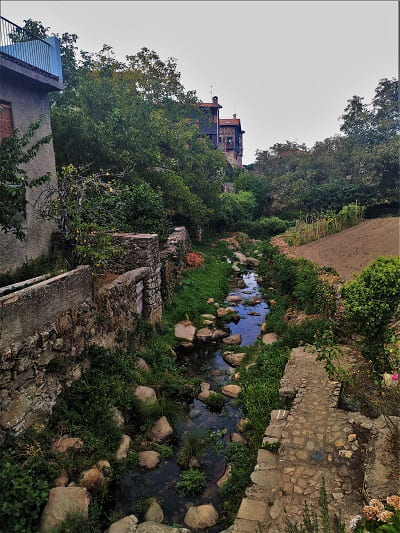
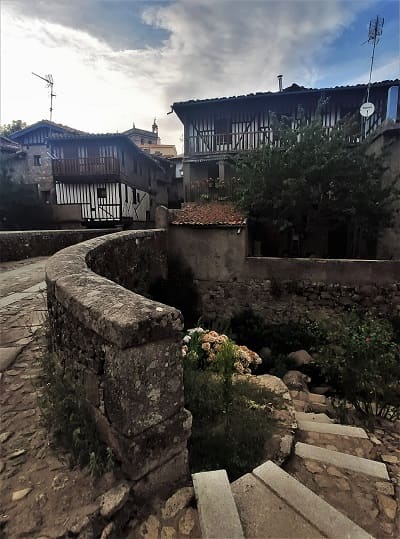

73. Mogarraz
73. Mogarraz
Another of the towns I passed by was
Mogarraz, a town that has a curious tradition of recent years and that is that all the houses have a painting with a portrait of who or who inhabited those houses, it is for This is known as
The Town of a Thousand Faces. The painter who is from the town would begin by making portraits of relatives and close people and in the end he was so famous that he was doing them for all the inhabitants.
The church already has paintings that reach the top of the tower. The architecture of the houses is well preserved and in addition to a hotel it has several restaurants as well as Mogarraz.
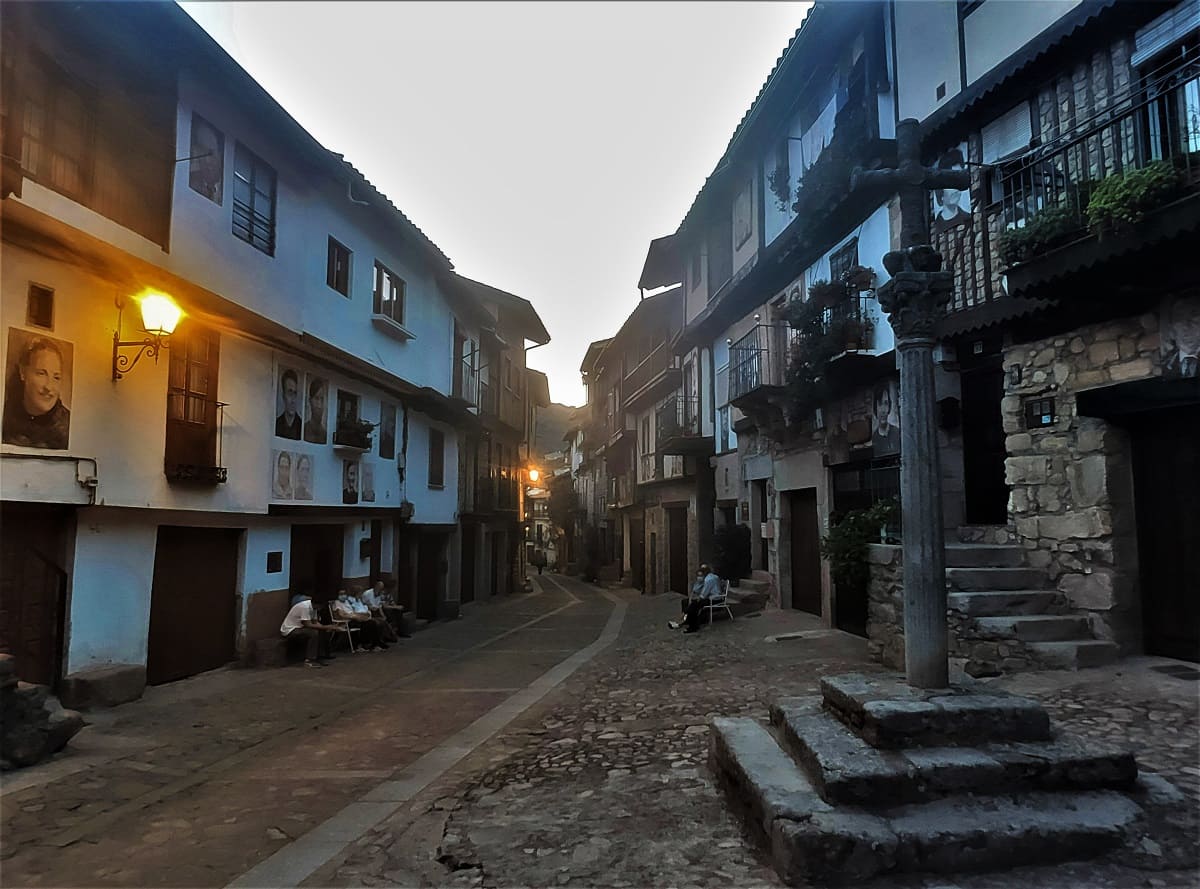
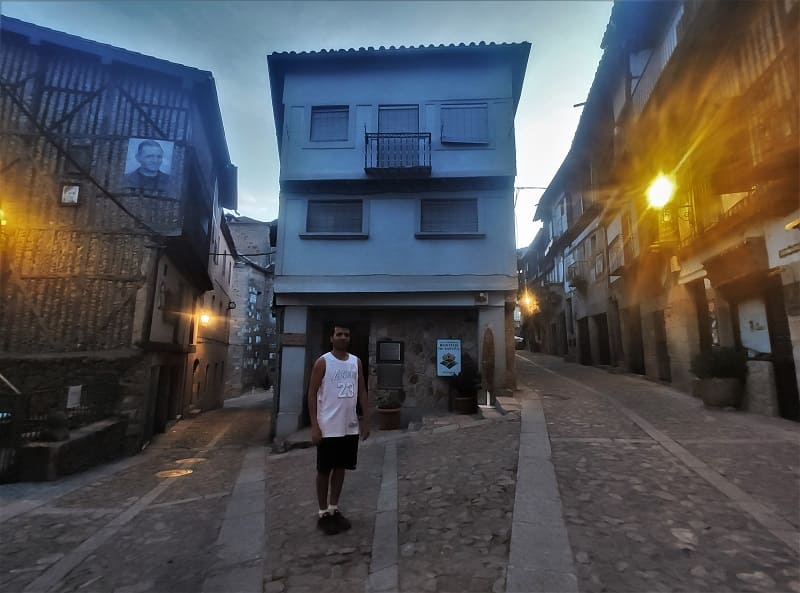
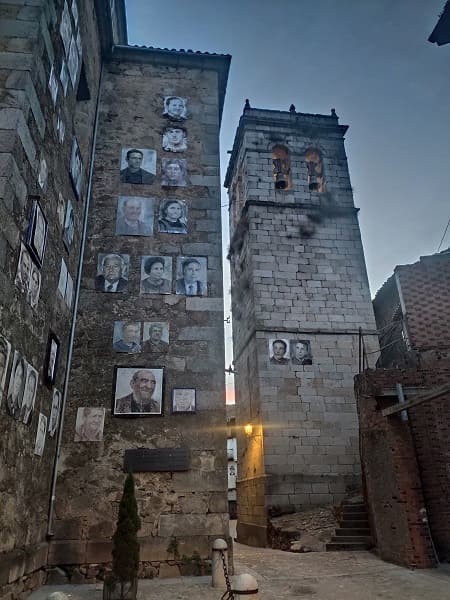
Now to sleep I would stop in a small town where the rural house La Casa de la Abuelita is located, in which the owner due to the coronavirus and that there were no visitors that day would leave me the keys to the house. It has a 24-hour service station where I was able to buy dinner and breakfast.
Church of Santa Maria and main squarer.
10
Cathedral, 14th century and main square.
11
12th century cathedral, walled enclosure, palaces and main street.
12
Our Lady Snow Church, s.XVII.
14
Day 5, Hervas to Toledo, passing through the Jerte valley (CLICK to continue)
September 13, 2021
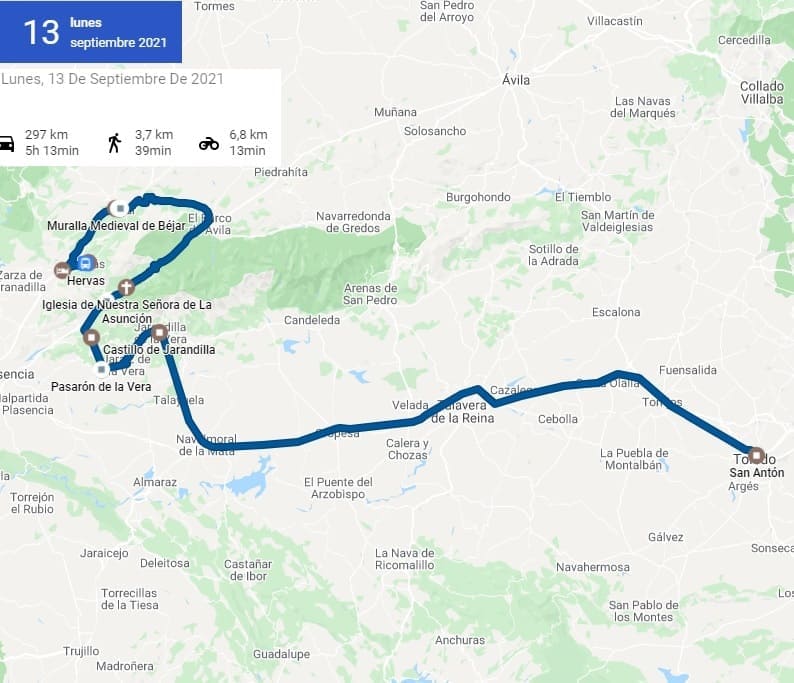




































 The Cathedral of Santa María dates from the 12th century. It was ordered to be built by King Fernando II of León. Let us remember that Salamanca in medieval times was part of the kingdom of lions. The cathedral would be completed in the 14th century, so the exterior style is Romanesque but it has all the Gothic details on the portals and finishes of the structure. The exterior apse is Romanesque as well as the exterior carvings or capitals, but the portals are Gothic.
The Cathedral of Santa María dates from the 12th century. It was ordered to be built by King Fernando II of León. Let us remember that Salamanca in medieval times was part of the kingdom of lions. The cathedral would be completed in the 14th century, so the exterior style is Romanesque but it has all the Gothic details on the portals and finishes of the structure. The exterior apse is Romanesque as well as the exterior carvings or capitals, but the portals are Gothic.










































